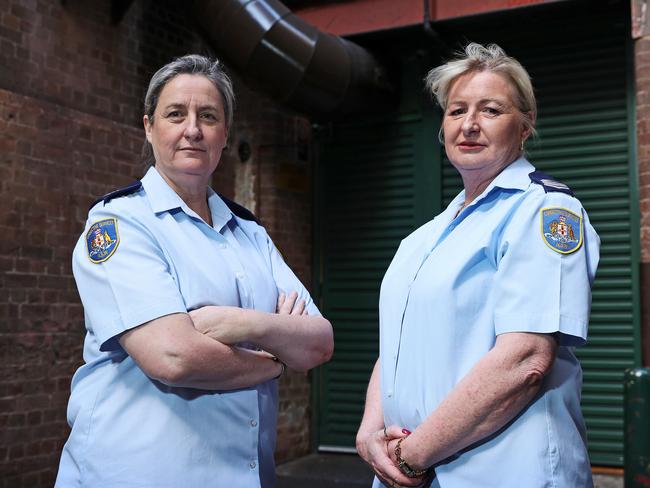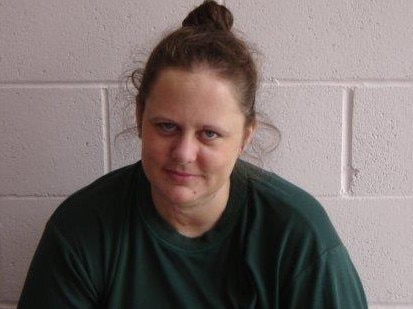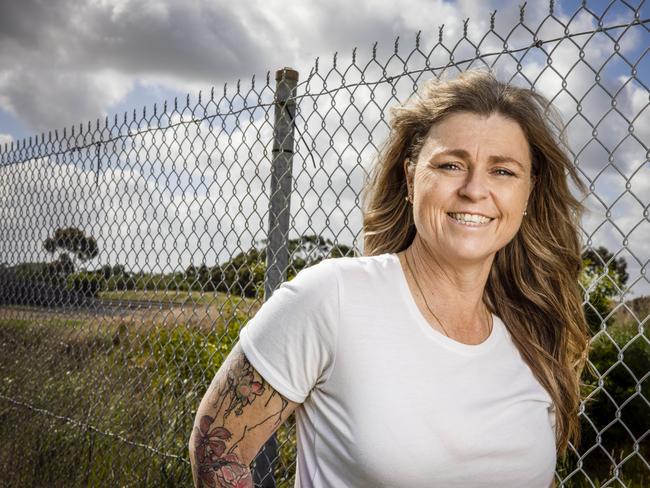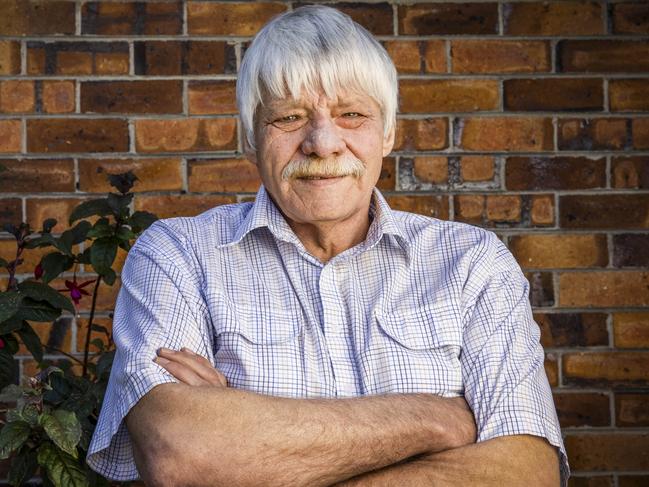On Guard podcast: Prison guards watch inmate Rebecca Jane Butterfield bash her own head in
The officers who saw Australia’s most dangerous female inmate stab another prisoner to death have never recovered. Listen to their story. Warning: Graphic
Behind the Scenes
Don't miss out on the headlines from Behind the Scenes. Followed categories will be added to My News.
Corrections officer Trish O’Brien steeled herself.
One of the country’s most violent female inmates, Rebecca Jane Butterfield stood before her, her face and hair soaked in blood.
Butterfield’s forehead was caved into a bloodied hole, self-inflicted by bashing her head against the wall.
Trish thought she could see bits of skull.
“She’d go for the shock value … you’d go to her door and she’d sit there, and because there was a big hole and you could see her skull she would stick her finger between the skull and her scalp, and just run it like this,” she gestures.
“You didn’t want to show her any shock, so you’d just stand there and talk normally and then you’d walk away and go, ‘oh. My. God’,” O’Brien, 54, who works at Silverwater Women’s Correctional Centre and oversees staff welfare in a role split-funded by Corrective Services NSW and union, the Public Service Association, said.

In another 2003 incident, Butterfield murdered an inmate at Emu Plains Correctional Centre, stabbing her 33 times with a kitchen knife.
“There are five prison officers that witnessed that and they will never be the same again,” Nicole Jess, 52, a senior officer at Silverwater women’s prison said.
“Some are back to work, some aren’t.”
But Butterfield is just one inmate, and these are just the tip of the iceberg when it comes to the shocking traumas prison workers are exposed to daily around the country.
What results is an underbelly of post-traumatic stress disorder (PTSD), which, in many cases, goes unreported due to an industry culture of stoicism and officers’ fears of being mocked or forcibly stood down if they speak up.
In researching for new podcast On Guard – an eight-part series that exposes what life is really like working at Australia’s toughest prisons – this journalist interviewed approximately 20 corrections workers.

The majority either referenced their own experience of PTSD and mental health struggles, or the PTSD battles and suicides of colleagues.
In episode one, former Queensland corrections officer Kerry Corbin recounts an assault in which he was “skated” across the prison floor on his own blood by an inmate.
This left him unable to work with a permanent neurological injury, PTSD and a movement disorder.
Corbin also reflects on the long-lasting “darkening” of his mental outlook after spending every day surrounded by notorious paedophiles, such as Daniel Morcombe’s killer Brett Peter Cowan.
Search your digital masthead through your app store, download the masthead app and listen to all On Guard podcast episodes now.
The common affliction is shared by many officers who have come close to Australia’s most evil prisoners.
Former South Australian officer, Jennifer Kaschau, recalls the disturbing experience of managing old-lady killer Angelika Gavare, and an assault which caused her PTSD flashbacks and ongoing health anxiety.

Later in the series, retired NSW officer Beatrix ‘Trixie’ Bennett-Hillier, shares her chilling account of escaping an assault from Janine Balding’s killer, Stephen ‘Shorty’ Jamieson, as well as the moment John Travers – ringleader of the gang who raped and murdered Anita Cobby – pulled a pretty, young officer into his cell.
“We put our lives on the line every single day and we are saving lives,” O’Brien said.
“We’re counsellors, we’re first aid, ambos, we’re the police, we’re the fireys, you name it -- we’re all these roles wrapped into one. And each day we keep coming back, and we keep doing the same thing.”
The mental health disorder, triggered by exposure to trauma, can result in distressing flashbacks and memories, hyper vigilance, difficulty sleeping and concentrating, negative thoughts, aggressive behaviour, and avoidance of reminders of the event.
Australia’s National Centre of Excellence in Posttraumatic Mental Health, Phoenix Australia, reports 4.4 per cent of Australians, or 1 million people, were living with PTSD in the past year.

There are no national statistics documenting the prevalence of PTSD in Australian corrective services.
However, in the US, corrective-services policy expert Caterina Spinaris, found 34 per cent of officers met criteria for PTSD in an anonymous 2011 survey.
Director of The University of Adelaide’s Centre for Traumatic Stress Studies Professor Alexander McFarlane believes corrective service workers are “very much” at heightened risk of PTSD.
“They’re not only subject to assaults and threats of assaults but they also witness suicides and gross acts of violence between prisoners, so I think there’s little doubt they are at greater risk,” Prof McFarlane said.
Corrective Services NSW told News Corp in the past financial year 144 people lodged claims of psychological injury. While the industry employs 10,000 people in NSW, numerous officers interviewed for this story stressed claims are just the tip of the iceberg, with many officers fearing negative consequences or career stagnation if they come forward.
In the same period, South Australia’s Department of Correctional Services stated there had been 28 workers’ compensation claims for mental stress.
Queensland Corrective Services reported 39 psychological claims in the period, specifying 10 were specifically for PTSD.
Corrections Victoria did not provide any data when requested.
Originally published as On Guard podcast: Prison guards watch inmate Rebecca Jane Butterfield bash her own head in


